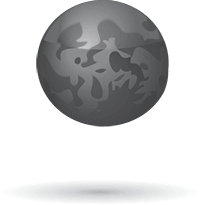Restoring biodiversity in a home garden or any area can be done by incorporating native plants.
They promote it by limiting the amount of maintenance needed while providing food and housing for wildlife. Native plants are adapted to a specific area. Native landscapes have a balance between the animals and plants enabling them to co-exist. Once established, native plants require less supplemental water, fertilizer, pest management and overall maintenance than non-natives.
Greater biodiversity stems from less human interference, with these native habitats being beneficial as a food source for wildlife. Some species of wildlife are non-specific in the types of plants they prefer, while others require certain types of plants. Incorporating a variety of native plants will encourage more diversity of wildlife to your landscape.
Native plants to consider for a landscape include Bee Balm, Witch Hazel, False Indigo and Serviceberry. Bee Balm will grow 2-3 feet tall and wide, with the tubular-shaped pink and purple blooms appearing in June through August attracting bees, hummingbirds, and butterflies. Witch Hazel grows best in the fall and winter, blooming yellow flowers that are great for feeding bees as well. It can reach 15-20 feet and prefers a moist, shaded location. False Indigo is a perennial that reaches more than three feet in height and width. It is a nitrogen fixer and prefers full sun. Its summer blooms will also attract butterflies and bees. Serviceberry is native to eastern Kansas and produces fruit that resembles the taste of blueberries in mid-summer.
Here are some tips to follow when adding native plants to a garden:
•Choose plants that naturally grow in the habitats available in your landscape, considering shade, wind and slope.
•Use the local native plant organizations for region- specific advice.
•Purchase native plants locally from a reputable source.
•Manage the native landscape with as little interference as possible, including no fertilizer or herbicides.
Unless they are problematic to the goals of your landscape, there is no need to remove exotic or alien plants. There is room for introduced plants that bring you joy alongside our native plants.
Save the date for an upcoming program. On March 21, there will be a “Pond Management Workshop” with KSRE Fisheries & Aquaculture Specialist, Dr. Joe Gerken. We will depart from the Sauder Center in Madison for pond tours at 5 p.m. with a meal and presentation to follow at 6:30 p.m. back at the Sauder Center.
Information comes from Kansas State University horticulture expert, Cynthia Domenghini.
For more information regarding upcoming programs, Agriculture and Natural Resources, 4-H Youth Development, or K-State Research and Extension call the office at 620-583-7455, email me, Ben Sims, at benjam63@ ksu.edu, or stop by the office which is located inside the courthouse.


